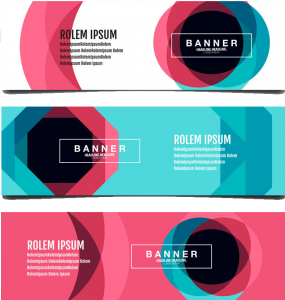For years, traditional TV ads were the kings of marketing. They shaped pop culture, turned products into household names, and set the tone for consumer trends. But times have changed—and so has the way we watch. With streaming services and smart TVs taking over living rooms, those prime-time ad slots just don’t hold the same weight anymore.
Enter connected TV advertising—a smarter, more targeted way for brands to reach audiences through streaming platforms like Netflix, Hulu, or YouTube TV. Instead of casting a wide net and hoping for the best, connected TV advertising lets you zero in on specific viewers based on their interests, behavior, and location.
Curious how to make the most of it? Don’t worry—we’ve got you. With insights from industry pros, we’re breaking down exactly how connected TV works, why it matters, and how your brand can tap into it effectively.
Table of Contents
ToggleWhere Is the CTV Advertising Budget Coming From in 2025?

The budget landscape is shifting—big time.
Back in 2021, connected TV advertising was mostly funded by pulling dollars out of traditional linear TV budgets. In fact, a solid 58% of marketers back then said their CTV spend came directly from their linear TV ad allocation. Fast forward to the latest findings, and that number has taken a nosedive. Now, only 21% of marketers are still pulling budget from linear TV—dropping it all the way down to the sixth spot on the list of funding sources.
So where’s the money for connected TV advertising coming from in 2025? The answer is clear: social media and email marketing are taking the biggest hits. According to the most recent survey, 66% of marketers say they’re shifting ad spend away from social media to fund CTV campaigns, while 43% are doing the same with their email marketing budgets.
Why the switch? Simple—connected TV advertising offers a rare combo: the wide reach of traditional TV with the precision and targeting capabilities of digital marketing. Advertisers are realizing they can get more bang for their buck by investing in platforms that not only reach viewers where they’re actually spending time (hello, streaming), but also allow for better tracking, personalization, and performance measurement.
Marketers are no longer just experimenting with CTV—they’re going all in. As consumer viewing habits continue to lean heavily into streaming, brands are reallocating funds to meet their audiences where they are. It’s not just about being seen anymore; it’s about being seen by the right people, at the right time, with the right message. And connected TV advertising is making that possible in a way traditional or even some digital channels can’t quite match.
The bottom line? If you haven’t already started thinking about where your ad dollars should go this year, now’s the time to seriously consider where CTV fits into your broader marketing strategy.
Branding, Ad Relevance, and Audience Targeting Are the Big CTV Goals for 2025

When it comes to connected TV advertising in 2025, it’s not just about being on screen—it’s about making it count. According to a recent survey by Digiday and MNTN, the top reason marketers are leaning into CTV is to boost brand awareness. In fact, 55% of respondents say that’s their number one goal, which makes sense—CTV offers the immersive, full-screen experience of traditional TV, but with the added power of digital targeting.
This emphasis on brand awareness mirrors what we’ve always seen with linear TV. But here’s the difference: connected TV advertising takes things several steps further. It’s not just a one-way message blast. It’s smarter, more tailored, and built for performance.
Coming in right behind brand awareness are two other major priorities: ad relevance (40%) and precise audience targeting (39%). Marketers today want more than just impressions—they want engagement, and that starts with making sure ads are actually relevant to the people watching. Generic messaging just doesn’t cut it anymore, especially when viewers have countless streaming options and short attention spans.
That’s where connected TV advertising really shines. It gives brands the tools to tailor their messaging based on user behavior, demographics, and even purchase intent. You’re not just casting a wide net—you’re placing well-crafted messages directly in front of the audiences that matter most.
And the best part? These ads don’t feel intrusive. Because they’re served through platforms people choose to watch, and are often aligned with viewer interests, they’re more likely to resonate. That makes CTV a win-win for both brands and consumers—more relevant content for viewers, and more impactful results for marketers.
In a nutshell: 2025 is all about making ads smarter, sharper, and more strategic. With connected TV advertising, brands are no longer guessing—they’re targeting, refining, and delivering campaigns that actually move the needle.
Branding, Ad Relevance, and Audience Targeting Are Top CTV Goals in 2025
Connected TV advertising has officially gone mainstream, and brands aren’t just dipping their toes in anymore. They’re diving in headfirst with clear goals in mind.
According to a fresh 2025 report by Digiday and MNTN (as cited by MarketingCharts), brand awareness remains the number one objective for marketers using CTV. A solid 55% of respondents say boosting brand recognition is their top priority—unsurprisingly mirroring the traditional role of linear TV. But unlike the one-size-fits-all approach of old-school television, connected TV advertising brings personalization to the mix.
Right behind brand awareness, ad relevance and audience targeting are leading priorities too. Around 40% of marketers are zeroed in on improving how relevant their ads feel to viewers, while 39% want to sharpen their precision targeting. Why? Because in today’s attention economy, showing the right message to the right person at the right time is everything.
#1. Measuring Brand Lift: Proving It’s Working
In 2025, it’s not enough to just run a campaign and hope for the best. You need proof that your ads are doing their job—and brand lift measurement is how brands are making that happen.
The easiest way? Pre- and post-campaign surveys. Before launching your connected TV advertising campaign, run a quick survey to measure baseline metrics like brand awareness, favorability, and purchase intent. Then, after the campaign wraps, send out the same survey to the audience exposed to your ads. The difference between the two sets of data shows the impact your campaign made.
Want more accurate insights? Use a control vs. exposed group approach. Split your audience into two groups—one that sees your ads and one that doesn’t. By comparing shifts in brand metrics between these two, you can directly attribute improvements to your CTV efforts. Just make sure both groups are similar demographically to keep the comparison valid.
#2. Precision at Its Finest: Ad Relevance & Audience Targeting
This is where connected TV advertising truly blows linear TV out of the water. Unlike the spray-and-pray method of traditional ads, CTV delivers relevant content to the people who actually care.
✅Audience Targeting
CTV platforms are data goldmines. Advertisers can use first-party and third-party data to target users by demographics, behaviors, purchase history, and even interests. Want to show skincare ads to women aged 25–34 who’ve recently browsed beauty tutorials? Done.
✅ Contextual Relevance
With connected TV advertising, brands can also place ads within content that complements their product. A travel company, for instance, can run ads during travel documentaries or adventure series—making the messaging feel less like an interruption and more like a natural fit.
✅ Dynamic Ad Insertion
One of the coolest features of CTV is dynamic ad insertion. This means different viewers watching the same show can see entirely different ads tailored to their individual profiles. No more generic messaging—every impression counts.
✅ Data-Driven Insights
And then there’s the analytics. CTV platforms offer detailed reports on ad completion rates, click-throughs, viewability, and more. These insights allow advertisers to tweak creatives, shift targeting, and optimize campaigns in real time.
In 2025, connected TV advertising isn’t just a trendy new format—it’s a full-fledged strategy that delivers measurable results. With clear goals like brand awareness, ad relevance, and laser-focused targeting, CTV gives marketers more control, more data, and more ROI than ever before. As more brands catch on, those not already in the game risk falling behind in a rapidly evolving digital-first landscape.
Top Ranking CTV Ad Formats for 2025

Connected TV advertising has officially leveled up in 2025, and brands are getting smarter—and more creative—about how they show up on the screen. The recent Digiday and MNTN survey revealed what’s hot right now in terms of ad formats, and let’s just say the days of static commercials are long gone.
Here’s how the numbers stack up this year:
✅49% of advertisers are still banking on the classic 15- and 30-second TV spots—they’re short, punchy, and effective when done right.
✅42% are now using interactive ad creatives that encourage viewers to engage directly with the content, like clicking, swiping, or exploring product features.
✅34% are embracing the power of shoppable QR codes, making it super easy for viewers to go from watching an ad to buying the product with just a quick scan.
✅27% of marketers use ad selectors, giving viewers a choice in which ad they want to see—a tactic that boosts engagement by putting the control in their hands.
✅20% have added mobile integrations, syncing the TV experience with users’ smartphones for seamless cross-device interaction.
✅Another 20% are making use of carousel formats, showcasing products, images, or video galleries in a scrollable, swipeable style.
What’s clear? Connected TV advertising isn’t just about pushing messages—it’s about building experiences that feel natural, engaging, and in some cases, even enjoyable for viewers.
What’s Driving the Format Evolution?
CTV in 2025 is all about innovation, personalization, and performance. With advanced data tracking and targeting, brands now have the tools to tailor their messages like never before. And with viewers spending more time streaming (up to 3.2 hours per day on average), advertisers are seizing the opportunity to be part of that content flow—without disrupting it.
What’s changing fast:
✅Measurement & analytics: With better real-time reporting tools, marketers can see exactly which formats are driving performance and optimize on the fly.
✅Targeting capabilities: Granular audience targeting has improved dramatically. Brands can now segment by behavior, interest, geography, device, and even streaming habits.
✅Integration with other digital channels: CTV no longer lives in a silo. Many advertisers are syncing CTV efforts with social media, display, email, and search to create a cohesive multi-touch experience.
Streaming is the new norm, and traditional TV budgets are shrinking to make room for connected strategies. If your brand hasn’t started experimenting with connected TV advertising, now’s the time. But don’t just show up—stand out.
Create high-quality content that’s tailored to both the platform and the audience. Tap into data-driven insights to adjust your creative, test different ad formats, and refine targeting. The most successful brands in this space are agile, strategic, and always looking for new ways to engage viewers without interrupting their entertainment.
As CTV continues to mature in 2025, the brands that thrive will be those that view it not just as a TV replacement, but as a dynamic, data-rich storytelling platform.
Why Connected TV (CTV) Advertising Is Winning Big in 2025

Connected TV advertising isn’t just a buzzword anymore—it’s one of the fastest-growing pillars in digital marketing. As streaming continues to dominate how people consume content, more brands are shifting their focus (and budgets) from traditional TV to CTV. In fact, global ad spending on connected TV advertising is projected to soar to $38 billion by the end of 2026, a massive leap that underlines just how valuable this space has become for marketers across industries.
So, what’s behind the CTV boom? Let’s unpack the top benefits that are making connected TV a must-have channel in every modern marketing strategy.
#1. Pinpoint Precision Targeting
Traditional TV can only get you so far with vague demographic buckets like “males aged 25-49.” With connected TV advertising, you can go way beyond that. Think audience segmentation based on income, education level, interests, shopping behavior, household size, and even streaming habits.
And it gets better—thanks to first-party data integration, you can retarget your current customers or build custom lookalike audiences. That means your ads are hitting people who are more likely to engage, buy, and remember. It’s personalization at scale, something linear TV just can’t compete with anymore.
#2. Real-Time Campaign Optimization
One of the biggest frustrations with traditional TV ads? Once they’re out, they’re out—you can’t tweak anything mid-run. But with CTV, you’ve got the power to make changes on the fly. Whether it’s refining your creative, shifting ad spend toward better-performing segments, or adjusting time slots based on engagement data, you can optimize continuously throughout your campaign.
This adaptability is a game-changer. Brands are now using real-time data to boost engagement by up to 30% simply by fine-tuning their messaging and targeting as they go.
#3. Localized Ads That Hit Home
Connected TV advertising also shines when it comes to geo-targeting. Because CTV devices can be tied to specific IP addresses, brands can deliver hyper-local campaigns tailored to a viewer’s neighborhood or even ZIP code. This makes your message feel relevant, timely, and personal.
For local businesses, this means cost-effective campaigns that speak directly to nearby customers. And for national brands, it’s a way to roll out region-specific promotions without wasting impressions on audiences outside your market.
#4. Sky-High Video Completion Rates
Let’s face it—if an ad’s getting skipped or ignored, it’s wasted money. But CTV ads tend to see far higher completion rates compared to their traditional counterparts, especially when they’re targeted and relevant. Viewers are more likely to watch CTV ads all the way through, giving your brand more time to make an impression.
And thanks to Automatic Content Recognition (ACR), marketers can track which ads are being viewed in full, and even which shows they appeared alongside. That kind of visibility into what’s working (and what’s not) is priceless.
#5. Next-Level Analytics & Attribution
This is where connected TV advertising really flexes its muscle. It offers robust performance tracking that ties ad views to real-world outcomes—like site visits, product purchases, or even store foot traffic. Tools like footfall attribution and multi-touch journey tracking make it easier than ever to calculate ROI with confidence.
For example, if someone watches your ad on Hulu and visits your site within the hour, you’ll know. If they walk into your store the next day? You’ll know that too. This level of attribution means your campaigns aren’t just visible—they’re measurable.
With its unique blend of targeting, flexibility, localization, and data-driven insights, connected TV advertising is the ultimate tool for modern marketers looking to break through the noise and build real connections with viewers. As we roll through 2026, the brands that lean into CTV’s strengths are the ones poised to win—whether they’re scaling nationally or just trying to make an impact in their hometown.
How to Get Started With Connected TV Advertising
Connected TV advertising is no longer a niche strategy—it’s now a core part of digital marketing playbooks, and for good reason. With U.S. households averaging over 115 minutes of streaming content per day and 92% of internet users reachable via CTV in 2025, it’s where your audience already is. But launching a successful CTV campaign requires more than just uploading a commercial and crossing your fingers.
Here’s a step-by-step guide to help you kick off your connected TV advertising journey the right way:
#1. Define What Success Looks Like
Before spending a single dollar, take a moment to define what you actually want out of your campaign.
Are you trying to build brand awareness or drive immediate action?
Do you want website visits, app downloads, or in-store traffic?
How will this fit into your broader marketing strategy?
Answering these questions will help shape every decision you make—from the type of creative you use to how you measure results.
Pro tip: In 2025, 55% of CTV advertisers cited brand awareness as their top goal, while 40% focused on improving ad relevance and 39% on hyper-targeted reach.
#2. Choose the Right Platform to Buy Ads
Connected TV advertising spans a range of platforms and buying options. You can go direct, programmatic, or somewhere in between. Your options include:
✅Smart TVs like Samsung or VIZIO
✅Streaming sticks like Amazon Fire, Roku, and Apple TV
✅Streaming services such as Peacock, Hulu, Pluto TV, or Netflix (yes, even they have ad-supported tiers now)
DSPs (Demand Side Platforms) like Nexxen, The Trade Desk, and Madhive that specialize in programmatic CTV buying
You’ll also want to choose a buying method:
✅Direct deals: Traditional, negotiated placements with publishers or platforms
✅Private marketplaces (PMPs): Invite-only, premium inventory spaces with controlled pricing
✅Programmatic guaranteed: Combines automation with fixed-price certainty
2025, programmatic CTV ad spending will account for more than 85% of all CTV transactions in the U.S.—a clear sign that automation is the way forward.
#3. Pick Your Ad Format and Start Producing
The most popular ad formats in connected TV advertising right now are:
✅15- and 30-second TV spots (used by 49% of brands)
✅Interactive ads that allow viewer interaction (42%)
✅QR-code-enabled ads (34%)
✅Ad selectors and carousels where users can choose what they want to watch
You don’t need to overcomplicate things. A well-produced 15-second spot with a strong call to action can outperform a flashy 60-second one if it speaks directly to the viewer.
Don’t forget to include actionable elements—QR codes, click-to-learn-more overlays, or mobile-integrated features—to shorten the path between attention and action.
#4. Set Your Budget and Bidding Strategy for Smarter Connected TV Advertising
Let’s be honest—connected TV advertising can deliver incredible results, but only if you’re smart with your budget. It’s not just about throwing money at screens; it’s about knowing where, how, and when to spend for maximum impact.
If you’re just getting started, don’t worry—you don’t need a massive budget to make a meaningful splash. The key is to test, track, and tweak. Here’s how to set yourself up for success without overspending:
✅ Start with a Test Budget
You don’t need to go all in from day one. Set aside a test budget to get the ball rolling. This allows you to run a few initial campaigns, gather valuable performance data, and learn what works—before scaling up.
✅Choose the Right Bidding Model
Not all ad pricing is created equal. In connected TV advertising, you’ve got a few solid options depending on your goals:
CPM (Cost per 1,000 impressions): Best for brand awareness.
CPC (Cost per click): Ideal if you want to drive traffic.
CPA (Cost per acquisition): Perfect when conversions are your top priority.
Pick the model that aligns with what success looks like for you.
✅Allocate Across Platforms Wisely
If you’re advertising on multiple platforms (like Roku, Amazon Fire TV, or Hulu), don’t just split your budget evenly. Distribute your spend based on platform performance and audience engagement. Some platforms will naturally outperform others depending on your niche, so stay flexible and reallocate as the data rolls in.
✅Set Frequency Caps
Nobody wants to see the same ad five times in one night. Frequency caps help you avoid annoying your viewers and wasting your ad budget. Make sure your connected TV campaigns strike the right balance between visibility and overexposure.
✅Spend Smart, Not Big
At the end of the day, connected TV advertising is all about strategy. It’s not just about how much you spend—it’s about how strategically you spend it. With the right approach, even a modest budget can deliver massive returns.
#5. Know Who You’re Talking To
Targeting is the bread and butter of CTV. Start with first-party data—info you already own from loyalty programs, email signups, or CRM records. Then, layer in third-party data to build even richer audience segments based on behaviors, interests, locations, and more.
Want to target:
✅Dog lovers in Austin watching outdoor documentaries?
✅High-income parents streaming morning cartoons on Saturday?
✅B2B decision-makers watching Bloomberg at night?
Connected TV advertising makes it all possible.
In 2025, the use of first-party data in CTV targeting increased by over 60%, thanks to growing concerns around cookie deprecation and data privacy.
#6. Create Compelling Content That Grabs—and Keeps—Attention
When it comes to connected TV advertising, flashy visuals and a big budget aren’t enough. What really makes the difference? Content that hooks your audience instantly and leaves a lasting impression.
Remember, you’ve got a short window to make an impact—sometimes just 15 to 30 seconds. That means every second counts. Your message should be clear, engaging, and aligned with your brand’s voice from the very first frame.
✅Make Every Second Count
Viewers aren’t just passively watching—they’re scrolling, snacking, or multitasking. So your content needs to stop the scroll (or channel surf) and hold attention.
Whether you’re going with a quick, punchy 15-second ad or a more immersive 30-second spot, the key is to speak directly to your audience. What do they care about? What problem are you solving for them? What emotion can you tap into?
✅Add Interactive Elements to Boost Engagement
Here’s where connected TV advertising truly shines: interactivity. You’re not stuck with passive ads. You can include smart, actionable tools like QR codes, on-screen CTAs, or companion banners that encourage viewers to take the next step—right from their TV screen.
By blending strong visuals with direct-response features, you bridge the gap between interest and action. Think of it like turning a casual viewer into a curious shopper in real time.
✅ Reinforce Your Brand Message
Your CTV ad isn’t just a sales pitch—it’s a chance to build recognition. Be consistent with your brand tone, visuals, and value proposition. By the end of your spot, viewers should not only know who you are but also why you matter.
Great creative is the heartbeat of successful connected TV advertising. It’s not about length—it’s about impact. With the right messaging, emotional cues, and a clear call to action, your content can do more than just entertain—it can drive measurable results.
#7. Launch, Track, and Optimize Like a Professional
Unlike linear TV, where you’d wait until the campaign ends to measure impact, CTV gives you live feedback throughout your campaign’s run. You can track:
✅Video completion rates
✅Attribution to site visits and conversions
✅Footfall data for in-store visits
✅Lift in online and offline sales
You can also A/B test creatives, shift budgets between platforms, and even pause underperforming ads in real time.
Brands that optimize in real-time report up to 40% higher ROI than those who “set it and forget it.”
Getting started with connected TV advertising doesn’t have to feel overwhelming. With a clear goal, the right platform, a thoughtful creative strategy, and a strong measurement plan, you’re well on your way to capturing the attention of today’s highly engaged, streaming-savvy audiences.
Best streaming and monetization platforms

Start by choosing the live-streaming platform that best aligns with your goals and niche.
Each platform below offers distinct monetization opportunities to help you turn your content into income:
#1. Twitch
Twitch is where live-streaming culture exploded—especially for gamers and content creators in entertainment. If you’re passionate about gaming, reaction content, music sessions, or even just chatting with fans, Twitch is your playground.
Once you hit Affiliate or Partner status, you unlock a whole toolbox for monetization—subscriptions, ad revenue, sponsored streams, affiliate product links, and viewer donations through Bits. The best part? Your viewers can support you in real time, which creates a stronger connection and keeps the income flowing.
Streamers can earn around $1.29 to $2.14 per 1,000 ad views, and that doesn’t even include income from fan subs or sponsorships. If you’re consistent and engaging, Twitch can become more than a side hustle—it can be your full-time gig.
#2. YouTube Live
Already love YouTube? Then YouTube Live is a natural extension. It brings the power of video search, discoverability, and monetization together on one of the biggest platforms in the world.
You can earn through ads, channel memberships, Super Chats (where fans tip you during live streams), and even merch sales right under your videos thanks to the YouTube Merch Shelf integration.
With the YouTube Partner Program, you’ll earn from every eligible stream and video. On average, creators earn between $2 to $3 per 1,000 views, and that number scales fast with a loyal audience. It’s perfect if you want to build a brand that lives beyond the livestream.
#3. Facebook & Facebook Gaming
Yes, Facebook is still very relevant—especially with its dedicated platform, Facebook Gaming. Whether you’re playing games, hosting live Q&As, or streaming lifestyle content, Facebook gives creators direct monetization options.
You can make money through Stars (virtual gifts your fans buy and send), monthly fan subscriptions, in-stream ads, and even live shopping sessions. Think of it like a digital tip jar, fan club, and shop all rolled into one.
With Facebook’s massive user base, there’s serious discovery potential. Revenue from ads generally ranges between $1 to $10 per 1,000 views, depending on your content type and audience size. If you already have a Facebook following, monetizing becomes even easier.
#4. Patreon
Patreon is your VIP lounge for superfans. It’s where your most loyal followers go to support you directly with monthly payments—and in return, you give them access to exclusive content, sneak peeks, or special perks.
You can create different membership tiers—maybe one for behind-the-scenes content, another for one-on-one coaching, and a premium tier for private live streams or early access to new content.
It’s a great way to build a reliable income stream that isn’t tied to algorithms or ad revenue. Plus, it deepens your connection with the people who care most about your work.
#5. DLive
DLive is the underdog with a twist—it runs on blockchain. Unlike most platforms that take a chunk of your earnings, DLive lets you keep 100% of your revenue, which makes it super appealing for creators looking to maximize profit.
Instead of traditional currency, you earn LINO points, which are blockchain tokens that can be exchanged for real money. The platform focuses on decentralization and community-driven support, making it ideal for creators who want to break away from the big corporate platforms.
If you’re exploring alternative monetization models and want to keep more of what you earn, DLive deserves a look.
#6. Trovo
Trovo is one of the newest kids on the block, but it’s growing fast—especially among up-and-coming streamers. The vibe here is all about community building and streamer support.
You can earn through Gems (the in-app currency), subscriptions, and ads, but what really stands out is the Trovo 500 Program. This initiative rewards the top streamers based on hours watched with monthly cash bonuses—no strings attached.
It’s a great platform to grow with, especially if you’re looking to stand out without competing directly with the Twitch giants from day one.
#7. TikTok Live
TikTok may have started with dance trends and viral challenges, but it’s now a serious platform for live streaming. Whether you’re hosting Q&As, showcasing a talent, selling products, or simply vibing with your followers, TikTok Live opens up new ways to monetize.
You can earn through virtual gifts (fans buy and send these during streams), live shopping integrations, and branded partnerships or ads. If you already have a decent following, going live can significantly boost your visibility and income.
TikTok’s short-form style translates well into engaging live sessions—just keep it fun, quick-paced, and interactive, and the rewards will follow.
Fun And Great Ways To Monetize Streaming

Now that you’ve nailed down the right platform, let’s dive into nine exciting and creative ways you can start making money from your live streams:
#1. CREATE AND SELL YOUR OWN BRANDED PRODUCTS
Want a fun and profitable way to make money while live streaming? Start selling your own branded products—it’s easier than you think.
Picture this: You’re live on stream, chatting with your audience, and casually showing off a hoodie with your logo or a coffee mug with your favorite catchphrase. That kind of real-time interaction builds hype and drives sales. Whether you’re on Twitch, YouTube Live, or diving into the world of connected TV advertising, showcasing your merch during a stream can make a big impact.
Here are a few ideas to get started:
#1. Merchandise – T-shirts, caps, stickers, mugs… anything with your brand on it. It’s a great way to earn passive income while letting your fans rep your brand in the real world.
#2. Digital products – Think gaming overlays, stream alerts, emotes, or wallpapers. These are super easy to deliver and cost almost nothing to produce.
#3. Books or courses – Got skills? Share them. Create eBooks, live tutorials, or even on-demand webinars. Whether it’s gaming tips or advice on launching a connected TV advertising strategy, your viewers will appreciate the value.
Pro tip: Want to skip the hassle of shipping and inventory? Use print-on-demand services to sell merch without ever touching a box. You design it, they fulfill it—it’s that simple.
#2. MONETIZE YOUR STREAMS WITH ADS
Ads might not be the flashiest part of streaming, but when done right, they’re seriously effective. Not only can they boost your visibility, but they also provide a consistent income stream without needing to sell anything directly.
#1. Get More Eyes on Your Content
Want to grow your audience while earning on the side? Ads can help with both. Running targeted ads on platforms like YouTube Live, Twitch, Facebook Gaming, or even through connected TV advertising channels can draw in fresh viewers who are already interested in what you do.
Try using display banners, overlays, or short pre-roll ads to promote your upcoming streams. These quick hits can put your content in front of people who are more likely to engage—and eventually subscribe, follow, or even buy from you.
#2. Different Ad Types You Can Use
If you’ve built up a decent audience, it’s time to cash in. Here’s how streamers are earning from ads without turning their streams into a commercial break:
Display & Overlay Ads – These are small, non-intrusive banners that pop up while your stream keeps rolling. Great for background revenue without stopping the action.
Pre-roll Ads – These play right before your stream starts. They’re effective, especially if new viewers are tuning in.
Mid-roll Ads – These pause your content for a quick break. Use them sparingly—they work best during natural pauses or intermissions.
Baked-in Ads – Think of this as a casual shout-out: you mention a brand, product, or service naturally during the stream. It feels authentic and blends into your content.
Post-roll Ads – These show after your stream ends—perfect for monetizing your wrap-up moments or end screens.
Product Ads via Widgets – Platforms like Twitch let you add interactive widgets so viewers can buy what you’re promoting in real time. Super slick.
Interactive Ads – These include polls, quizzes, or mini-games. They’re not just ads—they’re experiences, and they boost engagement while paying you.
Depending on the platform and engagement, ad revenue usually sits around $3.50 per 1,000 views, but with high interaction (especially in connected TV advertising setups), that number can climb fast.
Keep it balanced: Overloading your stream with ads is a surefire way to lose viewers. The goal is to keep ads subtle, relevant, and well-timed so they enhance your content—not interrupt it.
#3. COLLECT TIPS AND DONATIONS — KEEP IT SIMPLE, KEEP IT REAL
If you’re just getting started, accepting tips and donations is hands-down one of the easiest ways to make money from streaming. It’s low-effort, low-barrier, and high on community support.
Platforms like Twitch, YouTube Live, and Facebook Gaming all make it pretty easy to set up donation buttons or custom tip panels—and you can level things up with third-party tools like Streamlabs, StreamElements, or Ko-fi to make the whole process smoother and more fun for viewers.
#1. Make Giving Feel Personal
Don’t just accept tips—celebrate them. Shout out donors live, give them custom tags in your chat, or offer small rewards like emojis, badges, or even access to exclusive behind-the-scenes content. Some platforms even let fans send animated stickers or badges when tipping, which adds a fun and interactive vibe to the whole experience.
The more you make your supporters feel seen and appreciated, the more likely they are to keep showing up—and tipping again.
#2. Keep It Convenient
You can link your PayPal, CashApp, Buy Me a Coffee, or any other payment platform right in your stream description. Most live-streaming platforms also have built-in tipping systems, so it’s just a click for viewers to support you.
And if you’re tapping into connected TV advertising or streaming on smart TVs, make sure your donation links are easily accessible from your channel page or pinned in the chat. Even on bigger screens, your loyal viewers will still find ways to support if you guide them clearly.
How Much Can You Earn?
New streamers often make around $50 to $200 a month just from occasional donations—and that’s without a massive audience. As your viewer base grows and engagement gets stronger, those numbers can increase quickly.
Tip: Have a donation goal bar on your stream—it’s visual, motivating, and it gives your audience a reason to chip in.
#4. DIVE INTO AFFILIATE MARKETING — GET PAID TO RECOMMEND WHAT YOU LOVE
Affiliate marketing is one of the smartest ways to earn while you stream—and it’s surprisingly easy to get started. If you’re already talking about gear, tools, games, or anything you genuinely use and love, why not make money from it?
Here’s how it works: You partner with a brand, share your unique affiliate link, and earn a commission (usually between 5% to 30%) every time someone makes a purchase through it. Simple. No product handling, no inventory—just your influence doing the heavy lifting.
#1. Where to Drop Your Links
You can share affiliate links in your stream chat, pinned comments, video descriptions, or through banners and overlays on your screen. Some creators even integrate them into their scene layout or pop up a QR code (which works beautifully on platforms with connected TV advertising capabilities—viewers can scan right from their TV screen).
Social media’s fair game too—Instagram bios, TikTok profiles, X posts, or YouTube community tabs are all solid places to plant those links.
#2. Keep It Real and Relevant
Your audience can smell a forced promo from a mile away. So here’s the trick: only recommend products that actually make sense for your niche and that you’d use yourself. If you’re a gamer, show off your favorite headset. If you’re a beauty creator, wear and talk about the makeup you’re wearing live.
One of the most authentic ways to promote is simply by using the product on-screen—unboxing it, reviewing it, or just using it naturally while streaming. Viewers see it in action, you earn their trust, and when they click your link—they make a purchase, and you get paid.
What Kind of Money Are We Talking?
Experienced streamers who’ve built a loyal audience—especially Twitch Partners—can reportedly pull in $3,000 to $5,000 a month, just from affiliate earnings, when streaming around 40 hours a week. And that’s before adding in merch, ads, or donations.
Pro tip: Combine affiliate marketing with smart connected TV advertising strategies—like clickable QR overlays or product mentions during ad breaks—to boost visibility and conversions even more.
#5. EARN MONTHLY SUPPORT WITH PATREON PLEDGES
If you’ve got a loyal viewer base, Patreon is a fantastic way to turn their support into steady monthly income. Think of it as your exclusive members-only club—where your biggest fans get special perks, and you get predictable payouts.
When you launch a Patreon page, invite your viewers to make a monthly pledge in exchange for premium content like behind-the-scenes videos, exclusive livestreams, early access to content, or direct shout-outs.
To make it even more rewarding (and profitable), create tiered membership levels. The higher the tier, the more value your supporters unlock. Some great tier perks include:
#1. Early access to your new videos or unreleased content
#2. Special mentions or credits during live streams
#3. Access to private Discord or community chats
#4. Exclusive livestreams or AMAs
#5. Branded merch like stickers, shirts, or mugs
#6. Digital resources like eBooks, templates, or coaching guides
And if you’re already streaming through platforms tied to connected TV advertising, make sure to plug your Patreon during your stream—on-screen callouts, overlays, or quick shout-outs help drive signups without interrupting your flow.
#6. SET UP PAID SUBSCRIPTIONS FOR EXCLUSIVE ACCESS
If you’re not offering paid subscriptions yet, you’re leaving money on the table. Platforms like Twitch, YouTube, and Facebook Gaming all allow you to enable monthly subscriptions where fans directly support you—often starting at just $4.99 per month.
In return, your subscribers get exclusive perks like:
#1. Members-only streams
#2. Pre-recorded bonus content
#3. Priority chat status or custom emojis
#4. Access to private communities
On Twitch, streamers typically earn about 50% of the subscription fee, while platforms like YouTube and Facebook offer similar splits (though YouTube takes a 30% cut through Google).
If you’re reaching viewers through connected TV advertising, it’s smart to highlight your subscription tiers during streams or in on-screen graphics. That way, even those watching on smart TVs know how to support and what they’ll get in return.
#7. LAUNCH PAY-PER-VIEW (PPV) EVENTS
Have a big stream planned? Maybe a tournament, a high-stakes game, or a deep-dive tutorial? Turn it into a pay-per-view (PPV) event and charge viewers a one-time fee for access.
PPV works really well for:
#1. Special gaming streams
#2. Exclusive performances or live interviews
#3. High-value tutorials or training sessions
#4. Limited-time or VIP-only events
Platforms like Uscreen, VPlayed, and Muvi make it easy to host PPV content with full control over pricing, access, and branding. After platform fees, creators typically keep 100% of their revenue, which is a sweet deal.
This model pairs nicely with connected TV advertising—especially when promoted in advance through targeted CTV ads that drive hype and ticket sales.
#8. PARTNER WITH SPONSORS AND SECURE BRAND DEALS
Want to take your streaming career to the next level? Brand sponsorships can open big doors—but they come with big responsibilities too.
Sponsors might pay you to:
#1. Mention or demo their product during a stream
#2. Feature branded overlays or logos
#3. Do a full product review or walkthrough
#4. Align your content around their campaign theme
Smaller creators with just 1,000 to 10,000 subscribers can earn between $50 to $300+ per sponsored stream, while larger channels with strong engagement can pull in way more.
Just remember—audience trust is everything. Only partner with brands that align with your niche and content style. A poorly matched sponsor can hurt your credibility and kill your vibe.
When negotiating deals, lean into your connected TV advertising reach if you have it. Many sponsors love knowing their product is getting exposure on large screens in living rooms—not just mobile devices.
#9. OFFER COACHING AND MENTORSHIP TO ASPIRING STREAMERS
If you’ve built a following and figured out what works, there’s a whole market of new streamers who’d love to learn from you. Why not offer coaching as a side hustle?
You could teach things like:
#1. How to set up a pro-quality stream
#2. Branding, overlays, and channel optimization
#3. Audience engagement strategies
#4. Tips for growing on platforms with connected TV advertising reach
#5. How to land brand deals or monetize faster
Charge by the hour (many creators earn $95+ per session) or host group workshops on platforms like Zoom or Discord. These sessions often pull in more revenue with less effort than one-on-one coaching.
Make it official by building a coaching page on your website or integrating it into your Patreon as a premium tier. Share short teasers or testimonials during your stream to build interest and credibility.
Tip: Livestream a free mini-session to show off your teaching style. It’s a great way to convert lurkers into paying clients.
Conclusion
In 2025, connected TV advertising isn’t just a trend—it’s a strategic advantage. With more viewers cutting the cord and spending time on streaming platforms, CTV gives brands a unique opportunity to show up where attention is focused—and engagement is real.
From smart budgeting and AI-driven targeting to interactive content and short-form ad formats, the tools to succeed are all at your fingertips. The key? Build a strategy that’s data-backed, creative-first, and designed for today’s screen-hopping, multitasking viewers.
Whether you’re a brand ready to scale your reach or a marketer exploring new ways to connect with audiences, now is the time to get your message on the big screen—strategically, affordably, and effectively.
Don’t wait. Step into the future of advertising—and let connected TV work for you.








